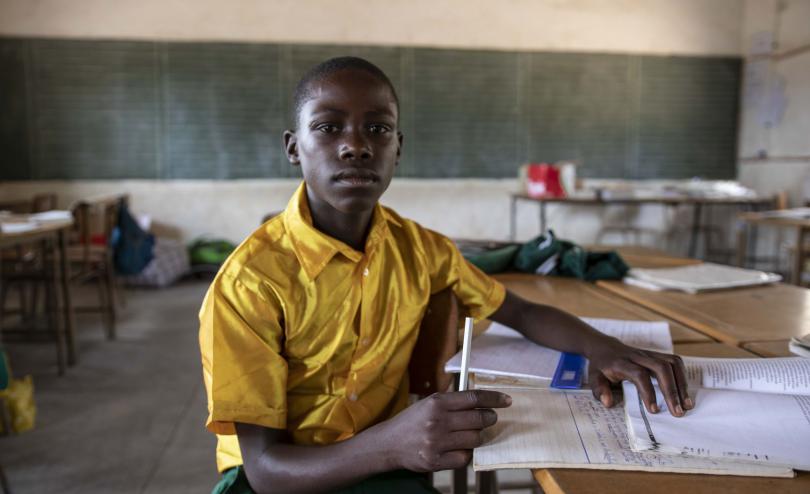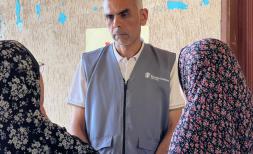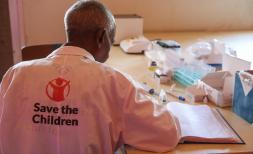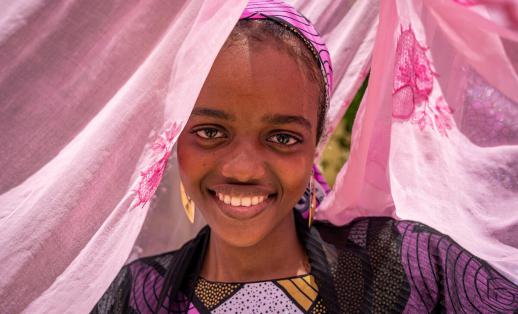Engaging children in the COVID-19 response and beyond

Last week, the United Nations Office for Disaster Risk Reduction (UNDRR) launched an important Words into Action guidelines: Engaging children and youth in disaster risk reduction and resilience building. These guidelines outline how to engage children and youth in tackling the multiple risks scenario that are unfortunately becoming the new normal in many countries.
Why are these guidelines important in the midst of COVID-19 crisis management?
Because disasters rarely happen one at a time. We already know that this pandemic is triggering a massive health and economic shock that will potentially trigger other shocks such as conflict or civil unrest. At the same time, the climate crisis is already affecting many countries, with catastrophic impacts.
Right now, many communities Save the Children works with are facing multiple risks.
The Horn of Africa is confronted with an invasion of locusts at a scale unseen for a decade that will have dramatic impact on food security [1]. In West and Central Africa, 19 million people are predicted to be in food and nutrition insecurity in the coming months [2]. The Global Humanitarian outlook published in December 2019 outlines over 160 million people in humanitarian need at the start of 2020 - before the coronavirus crisis took hold.
At a more localised scale, extreme events – which will now become more frequent and intense as a result of the climate crisis – are continuing. Last week, Cyclone Harold hit Vanuatu. Floods are reported in Afghanistan due to heavy rains resulting in 11 death and extensive infrastructure damage.
In such multiple shock scenarios, building the capacities of both communities and government that are at the front lines is imperative. Engaging with children and youth, the generation that will suffer the most from these multiple crisis, is critical.
The United Nations Office for Disaster Risk Reduction (UNDRR) guidelines are an important source of information and guidance to implement disaster risk reduction (DRR) with meaningful children and youth engagement. Save the Children experts have contributed in this collective effort to demonstrate that children are not only victims of disasters of all kinds, but can play a meaningful role in mitigating risks, preparing and influencing adults to change their behaviours.
While the COVID-19 crisis is unprecedented in recent history, it is vital that we all continue to engage children and youth in preparing for other shocks and future crises. One of the ways to maintain a high level of preparedness for multiple crisis scenario is to engage communities to prepare for the coronavirus crisis, via our existing community and school-based disaster risk reduction initiatives, in urban and rural context.
For example, in Bangladesh, our team have been mobilising urban young volunteers in Dhaka to provide information on how to stay safe from the virus. Ahsan Syed, Deputy Director for Risk Reduction and Climate Change for Save the Children in Bangladesh reported “COVID-19 often generates stigmatization… and giving the right information is crucial”.
Here are three main lessons and recommendations from the UNDRR guidelines as we all work on COVID-19 preparedness and response:
1. MAXIMIZE GOVERNEMENT CAPACITIES DEVELOPED UNDER SENDAI FRAMEWORK AND ENSURE CHILD RIGHTS ARE UPHELD
The Sendai Framework for Disaster Risk Reduction 2015-2030 is a major agreement that provides Member States with concrete actions to protect development gains from the risk of disaster. More than 190 countries have endorsed the agreement. In many countries, community-based disaster risk reduction (CBDRR) groups have been set up and trained in liaison with government officials to monitor risks, prepare and respond to various possible disasters, including epidemic outbreaks.
Save the Children has supported many child-centred CBDRR groups, ensuring that their fundamental rights to safety and survival, protection, education, development and participation are upheld. Furthermore, we are working with partners around the world as a member of the Global Alliance for Disaster Risk Reduction & Resilience in Education Sector (GADRRRES) to support Ministries of Education from the school to national level to prepare and respond, ensuring child rights are at the forefront. Engaging with these groups wherever they exist to address the COVID-19 crisis will contribute to accelerate the readiness of communities.
2. BUILD ON CHILDREN’S CREATIVITY, INNOVATION AND PLAY TO DEAL WITH DISASTERS
In times of crisis, children and youth have unique needs that must be addressed, but also their individual strengths. In most of our youth and child-led DRR programmes, social media and educational campaigns are designed and run by young people. This has engaged, inspired and motivated other children, youth and adults. Despite the imperative of social distancing, children and youth are showcasing creative and innovate ways helping others stay safe (i.e., songs, videos, dance, apps, websites).
During the COVID-19 crisis, it is important to keep existing child- and youth-led groups engaged. Sharing with them our resources and platforms so they can generate positive, youth-friendly COVID-19 response and action is vital.
3. ENSURE DECISIONS ARE INCLUSIVE OF THE MOST MARGINALISED CHILDREN AND THEIR FAMILIES
As authorities build strategies and responses to COVID-19, decisions must place attention on how structures might marginalise certain groups of children and youth and increase their vulnerability. This requires considered attention on how decisions related to COVID-19 affects children and youth differently based on a variety of factors including gender, ethnicity, disability, legal status, and poverty. Inclusion of the most marginalised groups, including children with disabilities, girls, minorities and street children, is imperative.
Find out more about Save the Children’s coronavirus response here.







